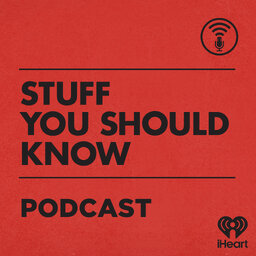SYSK Selects: Subways: HUH! What are they good for?
As ubiquitous as they've become, it's easy to overlook the marvels of engineering that are subways. Chuck and Josh go boring as they explore these systems of tubes that must circumnavigate rock, rivers, cables and more to get you where you're going.
Learn more about your ad-choices at https://www.iheartpodcastnetwork.com
 Stuff You Should Know
Stuff You Should Know


